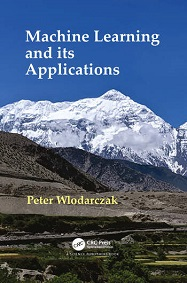Machine Learning and Its Applications
Material type: TextLanguage: English Publication details: Boca Raton, FL : CRC Press, c2021Edition: 1stDescription: XIV, 188 p. :illISBN:
TextLanguage: English Publication details: Boca Raton, FL : CRC Press, c2021Edition: 1stDescription: XIV, 188 p. :illISBN: - 9781032086774
- 006.31 WLO
| Item type | Current library | Shelving location | Call number | Copy number | Status | Date due | Barcode |
|---|---|---|---|---|---|---|---|
 Lending Collection
Lending Collection
|
Circulation Section | Circulation Section | 006.31 WLO | 2022-23 | Available | 97904 |
Author(s)
Peter Wlodarczak is an IT consultant in Data Analytics and Machine Learning. Born in Basel, Switzerland, he holds a Master degree and a PhD from the University of Southern Queensland, Australia. He has many years of experience in large software engineering and data analysis projects. He has published more than 20 papers and book chapters in this area and has presented his work on many conferences. His research interests include among other Machine Learning, eHealth and Bio computing.
In recent years, machine learning has gained a lot of interest. Due to the advances in processor technology and the availability of large amounts of data, machine learning techniques have provided astounding results in areas such as object recognition or natural language processing. New approaches, e.g. deep learning, have provided groundbreaking outcomes in fields such as multimedia mining or voice recognition. Machine learning is now used in virtually every domain and deep learning algorithms are present in many devices such as smartphones, cars, drones, healthcare equipment, or smart home devices. The Internet, cloud computing and the Internet of Things produce a tsunami of data and machine learning provides the methods to effectively analyze the data and discover actionable knowledge.
This book describes the most common machine learning techniques such as Bayesian models, support vector machines, decision tree induction, regression analysis, and recurrent and convolutional neural networks. It first gives an introduction into the principles of machine learning. It then covers the basic methods including the mathematical foundations. The biggest part of the book provides common machine learning algorithms and their applications. Finally, the book gives an outlook into some of the future developments and possible new research areas of machine learning and artificial intelligence in general.
This book is meant to be an introduction into machine learning. It does not require prior knowledge in this area. It covers some of the basic mathematical principle but intends to be understandable even without a background in mathematics. It can be read chapter wise and intends to be comprehensible, even when not starting in the beginning. Finally, it also intends to be a reference book.
Key Features:
Describes real world problems that can be solved using Machine Learning
Provides methods for directly applying Machine Learning techniques to concrete real world problems
Demonstrates how to apply Machine Learning techniques using different frameworks such as TensorFlow, MALLET, R
